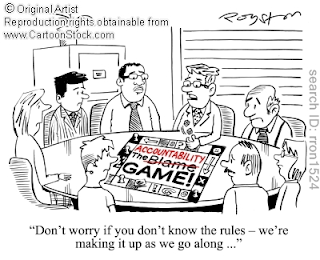Quality of Work Submitted
Work reflects graduate-level critical, analytical thinking. | A: Exemplary Work A = 4.00; A- = 3.75
All of the previous, in addition to the following: | B: Graduate Level Work B+ = 3.50; B = 3.00; B- = 2.75 All of the previous, in addition to the following: | C: Minimal Work
C+ = 2.50; C = 2.00; C- = 1.75 | F: Work Submitted but Unacceptable F = 1.00 |
Assimilation and Synthesis of Ideas
The extent to which the work reflects the student’s ability to-
1. Understand the assignment’s purpose; 2. Understand and apply readings, discussions, and course materials.
*When referencing web-based sources, an active hyperlink to the original source must be included (if applicable). |
Demonstrates the ability intellectually to explore and/or implement key instructional concepts.
Demonstrates insightful reflection and/or critical thinking, as well as creativity and originality of ideas.
* May include, but are not limited to, scholarly articles, web-based information, etc. |
Demonstrates a clear understanding of the assignment’s purpose.
Provides careful consideration of key instructional concepts.
Includes specific information from required readings or course materials to support major points.
|
Shows some degree of understanding of the assignment’s purpose.
Generally applies theories, concepts, and/or strategies correctly, with ideas unclear and/or underdeveloped
Minimally includes specific information from required readings or course materials. |
Shows a lack of understanding of the assignment’s purpose.
Does not apply theories, concepts, and/or strategies
Does not include specific information from creditable sources.
|
Adherence to Assignment Expectations
The extent to which work meets the assigned criteria and integrates technology appropriately. | Assignment meets all expectations, integrating exemplary material and/or information.
Assignment demonstrates exceptional breadth and depth.
| All parts of the assignment are completed, with fully developed topics.
The work is presented in a thorough and detailed manner.
Assignment integrates technology appropriately. | Most parts of assignment are completed.
Topics are not fully developed.
Assignment demonstrates minimal depth and breadth.
Some elements of technology are included. | Does not fulfill the expectations of the assignment.
Key components are not included.
Assignment lacks breadth and depth.
No technology integrated or integration method is inappropriate for application. |
Written Expression and Formatting
The extent to which scholarly, critical, analytical writing is presented using Standard Edited English ( i.e. correct grammar, mechanics).
When referencing web-based sources, an active hyperlink to the original source must be included.
Stated fair-use, copyright, licensing, and/or creative commons guidelines should be followed for all web-based resources.
*APA formatting guidelines need only be followed if applicable to assignment.
|
Work is unified around a central purpose with well-developed ideas, logically organized in paragraph.
Effective sentence variety; clear, concise, and powerful expression are evident.
Work is written in Standard Edited English. No prominent errors interfere with reading.
All web-based sources are credited through embedded links.
Fair-use, copyright, licensing, and/or creative commons guidelines are followed.
*Represents scholarly writing in a correct APA format.
|
Ideas are clearly and concisely expressed.
Elements of effective communication such as an introduction and conclusion are included.
Work is written in Standard Edited English with few, if any, grammatical or mechanical errors.
Few, if any, errors in crediting web-based sources.
Few, if any, errors following fair-use, copyright, licensing, and/or creative commons guidelines.
*Work is well organized with correct APA formatting throughout.
|
Ideas are not clearly and concisely expressed.
Elements of effective communication such as an introduction and conclusion are not included.
Work contains more than a few grammatical, or mechanical errors.
Some web-based sources are not credited.
Some errors in following fair-use, copyright, licensing, and/or creative commons guidelines.
*Somewhat represents mature, scholarly, graduate-level writing, with APA generally followed.
|
Major points do not reflect appropriate elements of communication.
No effort to express ideas clearly and concisely.
Work is not written in Standard Edited English. Contains many grammatical or mechanical errors
Web-based sources are not credited..
Fair-use, copyright, licensing, and/or creative commons guidelines are not followed.
* The quality of writing and/or APA formatting are not acceptable for graduate level work.
|
